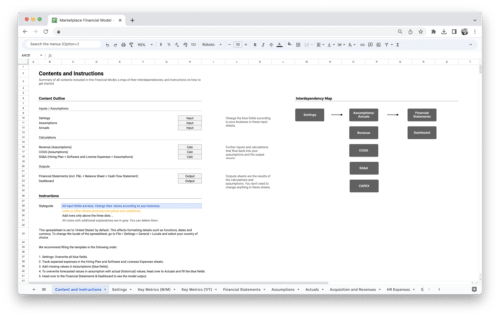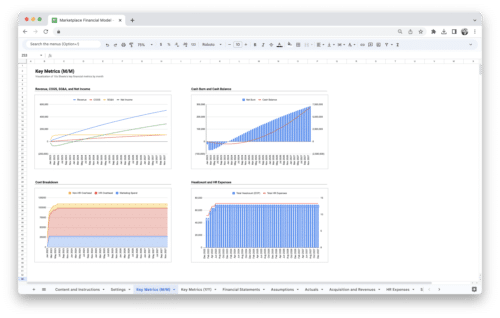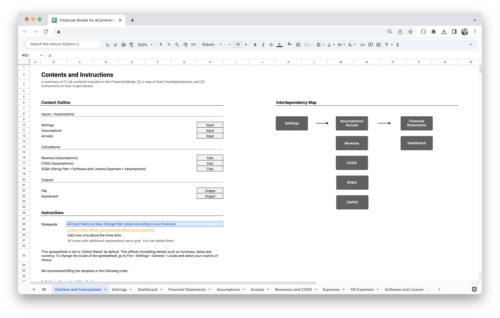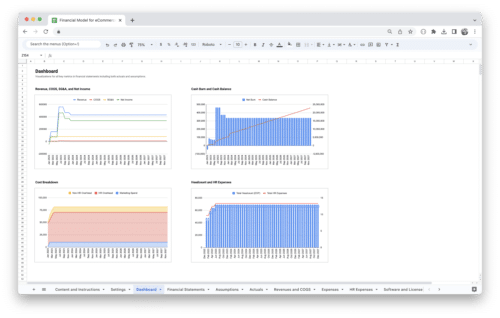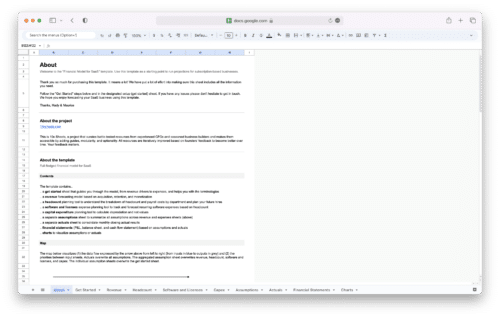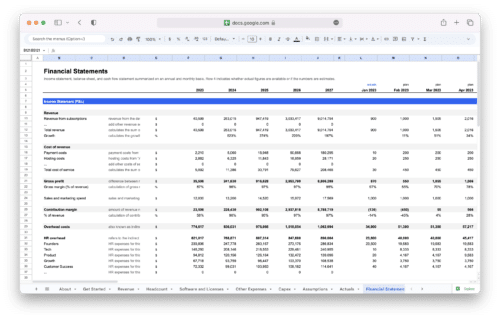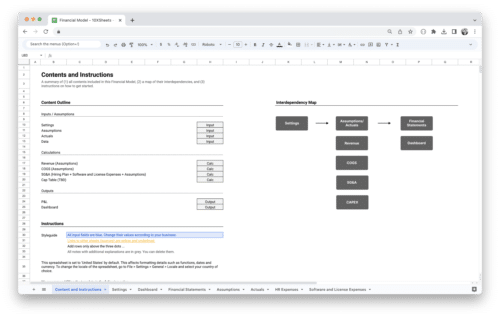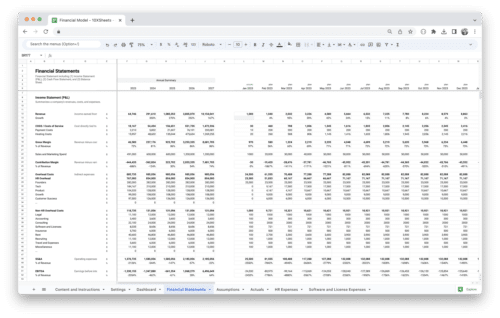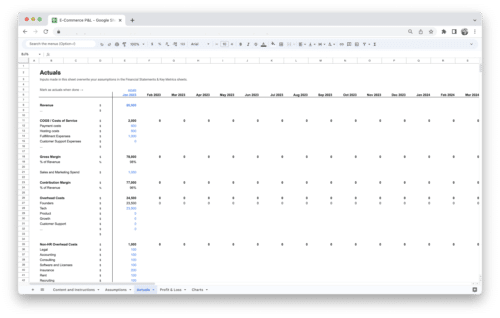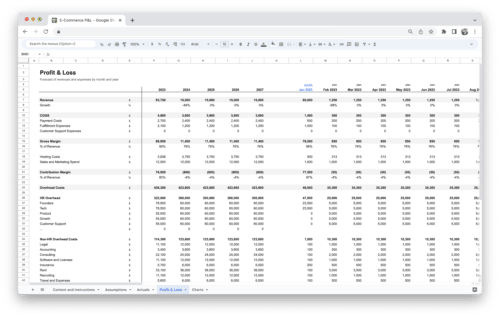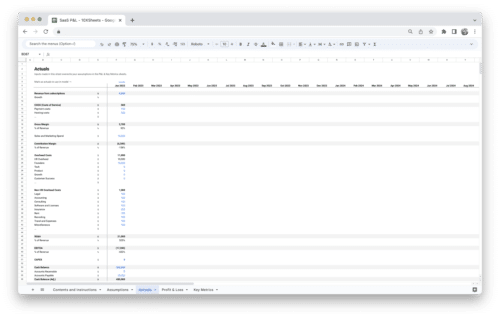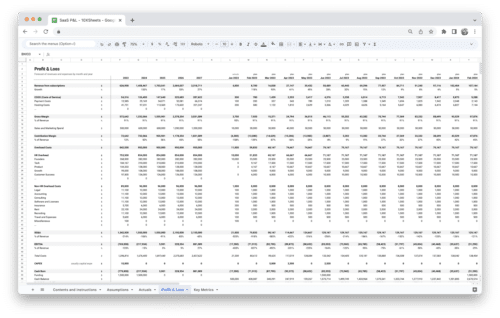
- What is a Fiscal Year?
- The Purpose and Role of a Fiscal Year
- How to Choose the Right Fiscal Year for Your Business?
- Examples of Fiscal Year Practices
- Global Differences in Fiscal Year Systems
- The Process of Closing the Fiscal Year
- Fiscal Year vs Calendar Year: Which One Is Right for You?
- Fiscal Year Reporting and Financial Statements
- Challenges Businesses Face with Fiscal Year Planning
- Conclusion
Have you ever wondered why businesses don’t always follow the calendar year when it comes to tracking finances? The concept of a fiscal year might seem a bit confusing at first, but it’s actually a smart way for businesses to organize their financial operations. A fiscal year allows companies to track income, expenses, and performance over a 12-month period that works best for their specific needs, rather than sticking to the traditional January-to-December timeline.
Whether you’re running a small business, managing finances for a large corporation, or just curious about how things work behind the scenes, understanding how fiscal years function can help you make better financial decisions. From tax planning to budgeting, choosing the right fiscal year has a big impact on how businesses plan, report, and grow.
What is a Fiscal Year?
A fiscal year (FY) is a 12-month period that businesses and organizations use for accounting and financial reporting purposes. It’s a timeframe in which a company tracks its income, expenses, and overall financial performance. Unlike the calendar year, which is fixed from January 1st to December 31st, a fiscal year can begin on any date and ends exactly 12 months later. The choice of start date for a fiscal year depends on various factors, including business cycles, industry standards, and tax regulations.
For instance, a company might choose a fiscal year that runs from April 1st to March 31st to better align with its business cycle, especially if the company’s busiest period falls toward the end of the calendar year. Fiscal years are typically used to match financial reporting with a company’s operational patterns, making it easier to track performance, make forecasts, and prepare financial statements.
Importance of a Fiscal Year
A fiscal year plays a crucial role in ensuring smooth financial management and strategic planning. Here’s why it matters:
- It provides a consistent timeframe for financial reporting, which helps businesses evaluate their performance over a set period.
- Fiscal years allow companies to budget and plan efficiently, considering factors like revenue cycles, seasonal fluctuations, and market trends.
- It streamlines tax filings by aligning income and expense tracking, simplifying tax planning and compliance with tax laws.
- It helps businesses forecast future performance by comparing results year-over-year and making data-driven decisions.
- The use of a fiscal year ensures that all financial transactions and adjustments are accounted for in a uniform manner, reducing errors and inconsistencies.
Fiscal Year vs. Calendar Year
While both a fiscal year and a calendar year represent 12-month periods, they differ in how their start and end dates are determined. The calendar year is fixed from January 1st to December 31st, while a fiscal year can begin on any date and ends exactly 12 months later.
The choice between a fiscal year and calendar year typically depends on operational factors, industry norms, and legal requirements. For example, a company in retail might choose a fiscal year that ends after the holiday season to better capture all the revenue from its busiest period, whereas a company in agriculture might choose a fiscal year that ends after the harvest cycle. This flexibility helps businesses match their financial reporting with their natural business cycles.
Using a fiscal year allows companies to adjust their financial reporting periods to reflect unique market or operational conditions, while a calendar year locks businesses into a fixed cycle. Choosing one over the other has significant implications for financial planning, tax obligations, and investor reporting.
Common Terms Related to Fiscal Year
There are several terms associated with the concept of a fiscal year that help clarify how it functions and is managed. Here are a few common terms:
- Fiscal Quarter: A three-month period within a fiscal year, typically used for more frequent financial reporting. Many businesses report their financial results quarterly.
- Fiscal Year-End: The last day of the fiscal year, marking the period when companies finalize their financial statements and prepare for the next year.
- Accrual Accounting: A method of accounting where revenue and expenses are recorded when they are incurred, not when cash is received or paid. This is often used to match financial activity to the fiscal year period.
- Fiscal Year Start: The first day of a company’s fiscal year, which can vary based on business needs and industry practices.
- Year-End Adjustments: The changes or updates made to financial records at the end of the fiscal year, such as accruals, depreciation, and inventory valuations.
- Operating Cycle: The length of time it takes for a business to purchase inventory, sell goods or services, and receive cash. This can influence the choice of a fiscal year.
The Purpose and Role of a Fiscal Year
A fiscal year plays a foundational role in managing your business’s finances and operations. It provides a structured timeframe for evaluating financial performance, planning future strategies, and ensuring compliance with various laws and regulations. Here’s how a fiscal year impacts different aspects of your business.
Managing Budgets and Financial Reporting
One of the primary uses of a fiscal year is to structure your budgeting and financial reporting. By choosing a set period, typically lasting 12 months, you can organize your business’s income and expenses into easily manageable segments. This makes it simpler to compare financial data from one period to another, track progress toward your goals, and make adjustments as needed.
Your fiscal year allows you to break down complex financial information into manageable chunks. It helps you maintain a clear picture of your revenue streams, operating expenses, and overall profitability. The structured nature of a fiscal year also helps you assess whether your business is on track to meet its financial targets, allowing you to reallocate resources or adjust strategies when necessary.
For example, if you operate a retail business that sees large swings in revenue during holiday seasons, aligning your fiscal year with these cycles can provide valuable insights. This alignment allows you to better forecast sales during peak periods and plan for lower periods, resulting in a more efficient and realistic budget.
Strategic Planning and Forecasting
A fiscal year helps guide your business’s strategic planning and forecasting. With a defined start and end date, you have a clear reference point to set both short- and long-term goals. This can be particularly helpful when it comes to deciding on investments, expansion strategies, or cost-cutting measures.
As you near the end of a fiscal year, you have an opportunity to assess what worked and what didn’t. These insights allow you to adjust your goals for the coming year. For instance, if your fiscal year ends with a particularly strong quarter, you might want to forecast growth into the next period, or if the year closes with unexpected losses, you may need to scale back expansion plans or revise your marketing approach.
Forecasting also relies heavily on historical data from past fiscal years. By analyzing the previous year’s financial reports and trends, you can make more accurate predictions about future growth, customer demand, and financial needs. Your fiscal year gives you a structured time frame to analyze trends and project outcomes, enabling smarter, data-driven decisions.
Legal and Regulatory Compliance
A fiscal year also plays a crucial role in ensuring that your business stays compliant with various legal and tax obligations. Most countries and jurisdictions require businesses to file their taxes based on their fiscal year, and failing to comply can result in penalties or other legal consequences. By adhering to a set fiscal year, you streamline the process of tax filing and reporting.
The fiscal year is often a legally mandated timeframe for businesses to submit financial statements, such as balance sheets and income statements. These statements are reviewed by regulatory authorities to ensure that your business is complying with accounting standards and tax laws. This can involve things like payroll taxes, sales tax filings, and corporate income taxes. A consistent fiscal year allows your business to stay in line with these regulations, ensuring that you avoid errors and meet deadlines with ease.
Additionally, by establishing a fiscal year, you create a predictable cycle for audits and assessments. Many organizations, particularly larger ones, undergo annual audits at the close of their fiscal year. This process ensures that financial statements are accurate and that your business is operating in accordance with accepted accounting principles. The audits also help identify areas for improvement, minimize risks, and improve financial transparency.
Ultimately, your fiscal year serves as the backbone for financial and regulatory compliance. It helps you keep track of income and expenses within a structured timeframe, ensures tax filings are accurate and on time, and fosters trust with investors, regulators, and other stakeholders.
How to Choose the Right Fiscal Year for Your Business?
Choosing the right fiscal year for your business is a strategic decision that can have a significant impact on your financial operations, tax filings, and overall business planning. Selecting a fiscal year that aligns with your business model, industry needs, and market conditions is crucial. Here are some important factors to consider when making this decision.
Factors Influencing Fiscal Year Selection
There are several considerations that should guide your decision when selecting a fiscal year. These factors not only affect your financial planning but also influence your overall operational efficiency and tax strategy.
- Seasonality of Your Business: If your business experiences large fluctuations in revenue due to seasonality, aligning your fiscal year with your busiest months makes sense. For instance, if your business generates most of its revenue during the holiday season, you might want to close your fiscal year right after the season ends, allowing you to account for all the income generated during that period.
- Tax Considerations: Different countries and jurisdictions have varying tax laws, and your choice of fiscal year could have implications on your tax filings. In some regions, businesses may be required to follow a fiscal year that aligns with the government’s tax reporting period. Understanding these tax regulations will help you avoid penalties and manage your tax obligations more effectively.
- Business Model: Your business’s operational model and cash flow patterns play a significant role in determining when your fiscal year should begin and end. If your business relies on long-term projects or contracts, for example, you may want to structure your fiscal year around project completion dates to reflect the financial results of each project more accurately.
- Industry Norms: Many industries follow specific fiscal year structures that are common across the sector. For instance, a fiscal year ending in December is the norm for most companies in retail and manufacturing, aligning with their annual sales cycle. Adopting the same structure can make benchmarking performance and comparing results with industry peers easier.
- Alignment with Investors: If your business relies on outside funding or has investors, aligning your fiscal year with the reporting period of your investors may be necessary. This makes it easier for investors to track your performance against their own financials and ensures that both parties are on the same page during evaluations.
Aligning Fiscal Year with Business Cycles
One of the key aspects of choosing a fiscal year is ensuring that it aligns with the natural cycles of your business. Business cycles refer to the patterns of activity and revenue that fluctuate over the year. These cycles often correspond to market demands, customer behavior, or specific seasonal trends.
For instance, if your business is in a highly cyclical industry, such as agriculture or tourism, your fiscal year should reflect these cycles. A fiscal year that starts and ends at the right time allows you to assess how well you’ve performed during peak seasons and adjust your business strategy for low-demand periods.
Aligning your fiscal year with the business cycle also helps in managing cash flow. You’ll be able to identify when you’ll need to invest in inventory, equipment, or staff, and when you can scale back. For example, a tourism business might see its highest revenue during the summer months. By setting the fiscal year to end in the fall, it can better track revenue from peak travel months and plan for the slower off-season.
Another benefit of aligning your fiscal year with your business cycle is forecasting. You can use data from the previous fiscal year to predict future trends, better manage budgets, and set realistic goals for the upcoming period. Whether you expect growth, stagnation, or contraction, a fiscal year based on your business’s natural rhythm makes those forecasts more accurate and manageable.
Advantages of Different Fiscal Year Starts
There are several advantages to selecting different start dates for your fiscal year. These advantages depend largely on the structure of your business, your industry, and your financial goals.
- Starting on January 1st (Calendar Year): A fiscal year that starts on January 1st and ends on December 31st is the most common and easiest to manage for businesses, particularly for those that don’t experience significant seasonal fluctuations. This is also the default for tax filings in many countries, simplifying your tax obligations and financial reporting.
- Non-Calendar Fiscal Year (e.g., April 1st to March 31st): Some businesses opt to start their fiscal year in the middle of the calendar year. A non-calendar fiscal year can be beneficial for companies that want to align their fiscal year with their operational cycles, like those in education or healthcare. For example, a school district might have a fiscal year that runs from July 1st to June 30th, as this matches its budget planning cycle.
- Aligning with Peak Business Periods: Businesses with heavy seasonal demands may choose a fiscal year that ends right after the peak season. For example, a retail company that sees most of its sales in November and December may find it more advantageous to close its fiscal year at the end of January, providing a more accurate picture of annual performance by including the holiday season’s revenue.
- End of Quarter Fiscal Year: Some businesses align their fiscal year with the end of a quarter rather than the end of a calendar year. A fiscal year that ends in March, June, September, or December makes it easier to compare your business’s performance to quarterly reports and industry standards. If your fiscal year ends on the last day of a quarter, you can break down your financial performance into smaller, manageable segments, making it easier to track and compare progress throughout the year.
Each of these options has its merits, and the best choice will depend on your specific business model, industry trends, and tax obligations. Whether you go with a calendar year or choose a more customized fiscal year start, the right choice will help you plan, track, and grow your business efficiently.
Examples of Fiscal Year Practices
Understanding how different businesses and industries apply fiscal years can help you make a more informed decision about what works best for your company. Fiscal years are not one-size-fits-all, and many organizations tailor their fiscal periods to better match their operational needs, revenue cycles, and tax strategies. Here are a few examples of how different sectors and businesses use fiscal years.
Example 1: Retail Industry
Retail businesses often experience a significant spike in sales during the holiday season, from November to December. For many of these companies, aligning their fiscal year-end with the end of the holiday season makes sense. By choosing a fiscal year that ends on January 31st, these businesses can better account for the revenue generated during this peak period. This timing allows retailers to:
- Capture all sales from the holiday season in the same fiscal year.
- Review their full-year performance, including any seasonal fluctuations.
- Plan their budgets and strategies for the next year based on the most recent financial performance.
For example, a major department store chain may have a fiscal year from February 1st to January 31st. This allows them to report all holiday sales as part of their fiscal year’s results, which are crucial for evaluating annual profitability.
Example 2: Agricultural Businesses
Agricultural businesses, particularly those involved in crop production, tend to follow fiscal years that align with their planting and harvest schedules. These companies often choose fiscal years that end after the harvest period to more accurately track their financial performance.
For example, a large farm might choose a fiscal year from July 1st to June 30th to allow them to account for all crop sales that occur at the end of the growing season. This period would encompass:
- Planting in the spring.
- Harvesting in late summer or early fall.
- Selling crops through the winter months.
Aligning the fiscal year with the farming cycle ensures that the company can accurately report revenue from the harvest and expenses for planting, labor, and equipment over the same 12-month period.
Example 3: Educational Institutions
Schools, universities, and other educational institutions often adopt a fiscal year that aligns with the academic calendar, as their financial cycles are heavily influenced by school terms, funding, and tuition fees.
For instance, a university might have a fiscal year from July 1st to June 30th, which allows them to:
- Track tuition payments from students for the full academic year, which typically runs from the fall semester to the spring semester.
- Adjust budgets to account for the academic year’s operating expenses, including faculty salaries and maintenance costs.
- Apply for government grants or funding that are disbursed on a fiscal-year basis, ensuring all expenditures are accounted for within the same timeframe.
Example 4: Technology Startups
Many technology startups opt for fiscal years that don’t necessarily follow the calendar year, as their business cycles are often driven by product development and funding rounds, which can occur at varying times.
For example, a tech startup might have a fiscal year from April 1st to March 31st. This timing might be beneficial because it could:
- Align better with product release cycles, which often happen in the spring or fall.
- Coordinate with venture capital investment schedules, as many funding rounds may take place in the first or second quarter of the calendar year.
- Allow for a clearer view of annual financial progress, including revenue from product launches or user growth.
Example 5: Non-Profit Organizations
Non-profit organizations often choose fiscal years that correspond with their grant cycles, fundraising events, or government fiscal periods. For example, a non-profit organization focused on community health might choose a fiscal year from October 1st to September 30th to align with:
- Government funding cycles that run on a fiscal-year basis, often starting in October.
- Their own fundraising efforts, which may peak during specific months like year-end giving or special events.
- Aligning their fiscal year with donor reporting requirements and the timelines of specific campaigns.
Choosing a fiscal year based on these factors allows non-profits to ensure accurate tracking of donations, expenses, and funding, and helps simplify reporting to grant agencies or donors.
Example 6: Global Corporations
Multinational corporations often select fiscal years that align with global financial reporting standards, or based on the operational cycles of their largest markets. For example, Sony, a global electronics and entertainment company, uses a fiscal year from April 1st to March 31st, which allows them to:
- Align with fiscal-year reporting requirements in key markets like Japan and the United States.
- Prepare for major product launches or sales periods that might not fall neatly within the calendar year.
- Report on global financial performance in a way that is easier to compare across regions, particularly with the fiscal-year schedules used in different countries.
Global corporations often choose a fiscal year that helps synchronize their financial operations across multiple countries and simplifies tax compliance in different regions. The goal is to ensure that the company’s reporting is consistent, accurate, and complies with all local tax laws while also allowing for better global financial management.
Each of these examples shows how businesses in different industries or regions select fiscal years that make sense based on their specific financial and operational cycles. Understanding the unique needs of your business and aligning your fiscal year with those needs can provide significant advantages in financial reporting, budgeting, tax planning, and overall performance analysis. Whether you’re in retail, agriculture, education, tech, or any other industry, your fiscal year plays a vital role in shaping how you manage your finances and plan for the future.
Global Differences in Fiscal Year Systems
The concept of a fiscal year is common across the globe, but the way it is structured and implemented can vary significantly from one country to another. Different nations have unique fiscal year systems, influenced by cultural norms, government regulations, and tax policies. Understanding these differences is crucial for multinational businesses, investors, or anyone managing finances across borders.
Fiscal Year Practices Around the World
Fiscal year systems are not standardized worldwide, and they often vary depending on the country or region. While many countries follow the calendar year (January 1st to December 31st), others may adopt a different timeframe that better suits their economic cycles or historical practices.
For example, in the United States, the federal government’s fiscal year runs from October 1st to September 30th, while most businesses align with this timeframe or select their own fiscal year that aligns with their unique business operations. This non-calendar fiscal year helps manage specific revenue cycles, particularly in government budgeting, where the U.S. government begins preparing for new programs and projects in the fall.
In contrast, countries like the United Kingdom and Canada follow a fiscal year from April 1st to March 31st. This system is not just a matter of tradition but also helps businesses plan better for the periods of fiscal planning that are aligned with their governmental budgets. These countries often incorporate the fiscal year structure into their national accounting and tax policies, which can influence how businesses manage their own financial calendars.
Many Asian countries, like Japan and India, also follow a fiscal year beginning on April 1st and ending on March 31st of the following year. This standard fiscal year is closely linked to government financial planning and aligns with key seasonal factors that influence local businesses, such as crop cycles and government spending.
In Australia, the fiscal year spans from July 1st to June 30th, a schedule that aligns with the Southern Hemisphere’s financial and business cycles. This non-calendar fiscal year suits businesses and government bodies operating in a different rhythm than those in the Northern Hemisphere, especially in sectors like agriculture, where harvest times influence revenue cycles.
The Impact of Local Regulations and Tax Laws
Local regulations and tax laws have a significant impact on how businesses structure their fiscal years. These regulations often dictate whether a company must follow a specific fiscal year period or if they have the flexibility to choose one that works for them.
In many countries, the government’s fiscal year plays a role in shaping corporate practices. For example, countries with a tax calendar that follows the government’s fiscal year often require businesses to align their fiscal reporting to make tax filings more efficient. In these countries, businesses must use the fiscal year that corresponds to the government’s budget cycle to ensure tax reporting consistency.
Tax laws also dictate when businesses must file their tax returns. If a country’s tax system is based on the calendar year, businesses may be required to submit tax filings by a set date in the spring or summer. However, businesses that have a different fiscal year often face different tax deadlines. For instance, a company that operates on a fiscal year from July to June may have to submit tax returns by September or October, depending on local laws.
In some jurisdictions, businesses may have more flexibility in choosing their fiscal year, but they are typically bound by certain constraints, such as reporting deadlines or industry-specific rules. For example, certain industries, such as education or retail, may have seasonal factors that influence when the fiscal year should end, and governments may allow businesses in these sectors to adopt fiscal years that align with their operational rhythms.
These local regulations ensure that businesses not only remain compliant with tax obligations but also remain in alignment with national financial planning processes. This alignment helps businesses forecast, manage cash flow, and engage in long-term strategic planning.
Examples of Global Fiscal Year Practices
Understanding how different countries structure their fiscal years can help you navigate global financial operations, especially if your business operates in multiple regions.
- United States: The U.S. follows a federal fiscal year running from October 1st to September 30th. Many U.S. businesses align their fiscal years with this structure, but others choose alternative cycles based on industry demands or seasonal sales patterns. The flexibility in choosing a fiscal year helps U.S. businesses tailor their financial reporting to match their operations.
- United Kingdom: The UK has a fiscal year running from April 1st to March 31st. This is the standard fiscal year for businesses and government agencies. Many UK businesses adopt this structure, but some may choose different fiscal years if they operate internationally or in specific sectors that follow different financial cycles.
- India: India’s fiscal year also runs from April 1st to March 31st, closely mirroring the government’s fiscal year. This aligns well with India’s agriculture-based economy and the timing of the monsoon season, which significantly affects revenue streams in industries such as agriculture and retail.
- Australia: The fiscal year in Australia spans from July 1st to June 30th. This alignment allows Australian businesses to plan around the Southern Hemisphere’s agricultural and seasonal cycles. The Australian tax system also requires businesses to file tax returns based on this fiscal year.
- Japan: Japan follows a fiscal year from April 1st to March 31st, with similar reasoning to that of India. The fiscal year aligns with the business practices of many Japanese companies, particularly in industries that are influenced by government spending cycles and fiscal planning.
- Brazil: In Brazil, businesses typically follow the calendar year, but some companies in specific sectors (such as agriculture or retail) may adopt a different fiscal year that better aligns with their operational cycles. Brazilian tax law requires businesses to report their earnings and file taxes on a calendar-year basis.
These examples show how a country’s economic structure, cultural norms, and industry practices influence its fiscal year system. Whether you are planning to expand your business globally or simply trying to understand the financial systems of different regions, understanding these global fiscal year practices is crucial for efficient financial planning and reporting.
The Process of Closing the Fiscal Year
Closing the fiscal year is a critical process for any business. It involves finalizing financial records, ensuring compliance with accounting principles, and preparing for tax filing. The way you close your books at the end of the fiscal year not only affects your tax reporting but also provides valuable insights into your company’s performance. Below is a breakdown of the key steps involved in this process.
Key Financial Statements at the End of the Fiscal Year
When closing the fiscal year, you’ll need to prepare key financial statements that give a clear picture of your business’s financial health. These reports are essential for internal analysis, tax filing, and sharing information with stakeholders like investors and lenders. The three primary financial statements you’ll need are:
- Income Statement: This statement summarizes your company’s revenue, costs, and expenses over the fiscal year, ultimately showing whether your business is profitable or not. It’s a vital report for understanding how much money your business earned versus how much it spent. This includes revenue from sales, cost of goods sold, operating expenses, and net profit or loss.
- Balance Sheet: The balance sheet provides a snapshot of your company’s financial position at a specific point in time, typically at the end of the fiscal year. It lists your assets, liabilities, and shareholder equity. The balance sheet allows you to assess whether your business has enough assets to cover its liabilities and how much equity shareholders have in the company.
- Cash Flow Statement: The cash flow statement tracks the flow of cash into and out of your business over the fiscal year. It’s divided into three sections: operating activities, investing activities, and financing activities. The statement is essential for understanding your business’s liquidity and its ability to meet short-term obligations. Cash flow is often considered the most critical indicator of a business’s financial health.
These three financial statements provide a comprehensive view of your business’s operations, profitability, and cash health at the end of the fiscal year. They are essential not only for internal analysis but also for compliance with accounting standards and tax laws.
Year-End Adjustments and Audits
As the fiscal year comes to a close, businesses need to make several adjustments to their financial records to ensure accuracy. These year-end adjustments are necessary to bring your financial records in line with accepted accounting principles and ensure that the reported figures reflect the true financial condition of your business.
- Accruals and Deferrals: One of the most common year-end adjustments involves accruals (expenses or revenues that have been incurred but not yet recorded) and deferrals (revenue or expenses that have been recorded but not yet earned or incurred). For example, if you’ve incurred an expense in the current fiscal year that will be paid in the next, you need to make an accrual adjustment. Similarly, if you’ve received payment for a service you haven’t yet provided, a deferral adjustment is needed.
- Depreciation: Businesses need to adjust the value of fixed assets to account for depreciation. Depreciation reflects the loss in value of assets over time. At year-end, an adjustment needs to be made to ensure that the depreciation expense is properly recorded on the balance sheet.
- Inventory Valuation: Companies must take a physical count of inventory to adjust for any discrepancies between the actual inventory on hand and what is recorded in the financial statements. This ensures that the cost of goods sold and ending inventory are correctly reflected on the income statement and balance sheet.
- Bad Debts: If you have any accounts receivable that are unlikely to be collected, you’ll need to account for them by recording an allowance for doubtful accounts. This adjustment ensures that your receivables reflect realistic expectations of what will be collected.
- Tax Provisions: You’ll also need to make any necessary adjustments to account for income taxes. This includes any provisions for taxes owed, estimated tax payments, and adjustments based on any changes in tax laws or rates.
Once these adjustments are made, businesses often undergo an audit or internal review to verify that everything is in order. An audit, whether internal or external, is a critical process that ensures the accuracy of your financial statements. Auditors will review your company’s financial records, check for any discrepancies, and verify that your business is compliant with accounting standards.
For larger companies, a third-party external audit may be required by law or as part of maintaining transparency with investors and stakeholders. However, smaller businesses may only need an internal audit, which can often be handled by an in-house accounting team. Regardless of the scale, conducting an audit helps identify errors, minimize risk, and improve the integrity of your financial reporting.
Best Practices for Closing Your Books
Closing your books at the end of the fiscal year can be a complex and time-consuming process, but following a few best practices can make the process smoother, more efficient, and less prone to error.
- Establish a Timeline: Set a clear timeline for all the tasks involved in closing the fiscal year, including finalizing financial reports, making adjustments, and completing audits. Having a structured plan ensures that nothing is overlooked, and all tasks are completed on time.
- Reconcile Accounts Regularly: Reconciliation is the process of ensuring that the figures in your financial statements match your bank statements, vendor records, and other source documents. Regular reconciliation throughout the year can prevent discrepancies from piling up and makes the year-end closing process faster and less stressful.
- Use Accounting Software: Investing in reliable accounting software can streamline the year-end closing process. Many software systems allow for automated reporting, real-time updates, and built-in error checks, making it easier to produce accurate financial statements and track adjustments.
- Document Everything: Keep detailed records of all adjustments made during the year-end process. This documentation is crucial for future audits, tax filings, and any adjustments that may need to be revisited in the future. Having a clear audit trail improves transparency and ensures that you can explain any discrepancies or adjustments to auditors or tax authorities if needed.
- Review Internal Controls: Ensure that your internal controls are in place to safeguard your financial data. This includes having checks and balances to prevent fraud or errors, such as requiring multiple sign-offs for significant adjustments or transactions.
- Communicate with Stakeholders: Keep your key stakeholders, including investors, management, and board members, informed about the status of the fiscal year-end closing process. Timely and transparent communication ensures that everyone is on the same page and can help resolve issues promptly.
By following these best practices, you can close your fiscal year efficiently and with confidence, ensuring that your financial statements are accurate, compliant, and ready for tax filing. A well-executed year-end process not only helps you meet regulatory requirements but also gives you valuable insights into your company’s financial performance and areas for future growth.
Fiscal Year vs Calendar Year: Which One Is Right for You?
When deciding between using a fiscal year or a calendar year, you’re choosing the framework that will guide your business’s financial operations, tax filings, and reporting. Each system has its own advantages and disadvantages depending on your business model, industry, and specific financial goals. Understanding these differences will help you make an informed decision about which option best suits your needs.
Benefits of Using the Calendar Year
The calendar year, which runs from January 1st to December 31st, is the most common fiscal year format, and it offers several advantages that can simplify your business operations.
- Simplified Tax Filings: Using the calendar year aligns with most tax systems, particularly in countries like the United States. The IRS requires businesses to file taxes based on the calendar year, so choosing this system means your business will follow the same tax deadlines as individuals, which can simplify your accounting and tax filings. This synchronization can make it easier for small businesses or sole proprietors to manage their finances, as they don’t have to worry about maintaining separate fiscal calendars for tax purposes.
- Standardized Reporting: Because the calendar year is the most common system, it’s easier to compare your financial performance with others in your industry. Whether it’s for benchmarking purposes or analyzing your competitive landscape, using the calendar year means your financial reports align with industry norms, making comparisons more straightforward.
- Cash Flow Management: The calendar year can also align better with the general business cycle for many industries. If your business operates on a cycle that reflects seasonal peaks around holidays or the beginning of the year, the calendar year provides an easy way to track performance during these periods. For instance, a retail business that sees a significant spike in sales around the winter holidays can evaluate its entire year with the fiscal year ending just after the peak season, providing a clearer view of profitability.
- Fewer Adjustments: Many businesses that use the calendar year have fewer adjustments to make when closing their books at year-end. Since the calendar year also serves as the tax year, businesses don’t need to worry about reconciling different reporting periods for taxes and financial statements. This reduces administrative work and ensures that everything is consistent.
Pros and Cons of Choosing a Non-Calendar Fiscal Year
A non-calendar fiscal year, which starts and ends at different dates than the calendar year, offers businesses flexibility but comes with its own set of challenges. The decision to use a non-calendar fiscal year depends on the unique needs of your business, including seasonality, operational cycles, and tax considerations.
Pros of Choosing a Non-Calendar Fiscal Year
- Better Alignment with Business Cycles: If your business experiences significant fluctuations based on specific seasons or cycles (such as in the agriculture, education, or retail industries), a non-calendar fiscal year allows you to choose a period that more accurately reflects your operational and revenue cycles. For example, a business that depends heavily on summer sales might choose a fiscal year that ends after its peak sales period, providing a more accurate snapshot of profitability.
- Flexibility in Tax Planning: For businesses that need more flexibility in managing tax liabilities, a non-calendar fiscal year can provide a strategic advantage. It allows you to shift revenue and expenses in a way that helps minimize your tax burden. For instance, you may want to defer some expenses or accelerate revenue to take advantage of specific tax rules or lower tax rates, which may be easier to do with a fiscal year that doesn’t match the calendar year.
- Avoiding Year-End Clutter: Many businesses experience a rush of financial activity toward the end of the calendar year. By choosing a non-calendar fiscal year, businesses can avoid the year-end crunch of processing all transactions, filing reports, and completing tax returns at the same time. This can ease administrative pressures and allow your team to focus more effectively on year-end tasks without the seasonal rush.
Cons of Choosing a Non-Calendar Fiscal Year
- Increased Complexity: A non-calendar fiscal year requires more effort when it comes to managing tax filings, financial reporting, and comparing performance with industry peers. Since most businesses use the calendar year, it can be more challenging to compare your results directly to competitors if your fiscal year differs from theirs. Additionally, your tax filings will have different deadlines from those following the calendar year, which may create a more complex accounting environment.
- Misalignment with Stakeholder Expectations: If your investors or key stakeholders operate on a calendar-year basis, using a non-calendar fiscal year can create confusion or add complexity when sharing your financial results. For example, if your investors expect to see annual reports at the end of the calendar year, your business’s reports may need to be adjusted or explained to accommodate the differences in fiscal year timing.
- Additional Work During Transition: When transitioning between a calendar year and a non-calendar fiscal year, you may need to implement special procedures to ensure that both your tax and accounting reports align. This could involve creating interim financial statements or making adjustments to your tax filings to account for the differences in fiscal periods.
Impact on Tax Filings and Planning
The choice between using a fiscal year or a calendar year has a direct impact on your business’s tax filings and financial planning. Whether you follow the calendar year or a non-calendar fiscal year, understanding the implications on tax filings is essential to avoid complications and penalties.
- Tax Filing Deadlines: Businesses that use the calendar year typically file their taxes by April 15th of the following year in countries like the United States. For businesses using a non-calendar fiscal year, tax deadlines will vary depending on the end date of the fiscal year. For example, if your fiscal year ends on June 30th, your tax return will be due several months later, on September 15th. This additional time allows businesses to make strategic decisions on how to manage taxes in ways that can benefit them financially.
- Tax Planning Flexibility: A non-calendar fiscal year provides businesses with greater flexibility for tax planning. By controlling the timing of income and expenses, companies can align their financial performance with fiscal-year-based tax laws to optimize deductions and credits. For example, if you anticipate higher tax rates in the following year, you can move some of your expenses from the upcoming fiscal year to the current one to minimize your tax liability.
- Depreciation and Tax Deductions: Depending on your fiscal year, you may also need to adjust your depreciation schedules and take advantage of tax deductions or credits. Businesses on a calendar year may find it easier to follow standard depreciation schedules, but those on a non-calendar fiscal year may need to carefully manage depreciation schedules to align with their reporting period.
The choice of fiscal year or calendar year significantly impacts the way you plan your tax strategy and file your returns. Selecting the right period can help optimize your tax position and simplify your reporting process, but it requires careful consideration of both your operational needs and legal obligations.
Fiscal Year Reporting and Financial Statements
When closing your books at the end of the fiscal year, the most critical step is preparing your financial statements. These reports are the foundation for understanding your company’s performance, financial health, and future prospects. Accurate reporting not only meets regulatory requirements but also provides valuable insights for decision-making and strategic planning. Let’s dive into the essential financial statements and how they connect with the fiscal year-end.
Overview of Essential Reports: Balance Sheet, Income Statement, Cash Flow
There are three primary financial reports that every business needs to prepare at the close of the fiscal year: the Balance Sheet, the Income Statement, and the Cash Flow Statement. These documents provide an organized view of your company’s financial standing and performance over the course of the year.
- Balance Sheet: This statement provides a snapshot of your company’s financial position at the end of the fiscal year. It lists all your assets (what you own), liabilities (what you owe), and shareholder equity (the net worth of the company). The balance sheet follows the fundamental accounting equation:Assets = Liabilities + EquityIt’s important because it helps investors, creditors, and management assess the company’s financial stability. For example, if your liabilities exceed assets, your business may be in financial trouble. Conversely, a strong balance sheet with solid equity indicates a healthy financial foundation.
- Income Statement (Profit and Loss Statement): The income statement provides a summary of your revenues and expenses over the fiscal year. It shows whether your business made a profit or incurred a loss. This is one of the most critical reports for understanding your company’s profitability. It details:
- Revenue or sales
- Cost of goods sold (COGS)
- Operating expenses
- Net income or loss
The income statement helps you analyze how much money your business made and where it spent or invested its resources. By comparing income statements year over year, you can track growth, margins, and identify areas where costs can be reduced.
- Cash Flow Statement: While the income statement reflects profitability, the cash flow statement tracks the actual flow of cash in and out of your business. It is divided into three sections:
- Operating activities: Cash flows from day-to-day business operations.
- Investing activities: Cash used for or generated by investments, such as buying or selling assets.
- Financing activities: Cash from borrowing, issuing shares, or repaying debt.
The cash flow statement is vital because it helps you understand your business’s liquidity. Even if your business is profitable, poor cash flow management can lead to solvency issues. Cash flow allows you to assess whether you have enough liquidity to meet your obligations, fund new projects, or make strategic investments.
The Connection Between Fiscal Year-End and Report Preparation
The fiscal year-end is the point at which you consolidate all financial activities and prepare reports that reflect the company’s performance over the 12-month period. The timing of these reports is essential because they offer a snapshot of your company’s health at a specific moment, usually marking the end of the fiscal year.
At fiscal year-end, you must ensure that all transactions—sales, purchases, expenses, income, and liabilities—are properly recorded and adjusted for any accruals, deferrals, or depreciation. The reports prepared at this time are used to make decisions for the following fiscal year, inform investors, and provide transparency for auditors and regulatory bodies.
For example, adjustments made before closing the books include reconciling bank accounts, adjusting for unpaid expenses or deferred revenue, and making sure all assets are properly accounted for. These adjustments ensure that the financial statements present an accurate reflection of your business operations. The connection between the fiscal year-end and these reports cannot be understated because these final reports will influence budgeting, forecasting, and strategy for the upcoming year.
Common Mistakes to Avoid When Reporting Fiscal Year Results
Preparing financial reports at the end of the fiscal year requires careful attention to detail, as any mistakes can lead to inaccurate financial statements, misinformed decisions, and potential legal or tax issues. Here are some common mistakes to avoid:
- Failing to Reconcile Accounts: One of the most common errors is not fully reconciling your accounts before closing. It’s crucial to compare your bank statements with your accounting records, ensuring every transaction has been recorded correctly. Any discrepancies should be resolved before finalizing your reports.
- Not Accounting for Accruals and Deferrals: Accrual accounting requires you to account for revenues and expenses when they are incurred, not when cash changes hands. Failing to adjust for accrued expenses or deferred revenue can lead to an incomplete or misleading income statement.
- Overlooking Depreciation: Assets lose value over time, and failing to account for depreciation can cause your balance sheet to overstate the value of assets. Make sure to properly calculate and record depreciation on all long-term assets.
- Underestimating Tax Liabilities: Many businesses underestimate their tax liabilities, especially if there are changes in tax law or business activities. It’s essential to review your tax situation before the fiscal year ends and set aside funds to cover any obligations.
- Improper Inventory Valuation: An incorrect inventory count or valuation can cause your balance sheet and income statement to be inaccurate. It’s important to perform a thorough physical inventory check and ensure that the value of your inventory is accurately reflected.
These mistakes can be costly and affect the integrity of your financial reporting. It’s essential to review your processes, conduct thorough audits, and use reliable accounting systems to avoid these pitfalls.
Challenges Businesses Face with Fiscal Year Planning
Fiscal year planning can present various challenges, especially for businesses that face unpredictable market conditions or operate in complex industries. Below are some of the most common hurdles companies may encounter when managing their fiscal year:
- Aligning fiscal year-end with business cycles to ensure accurate financial reporting
- Managing seasonal fluctuations in revenue and expenses
- Coordinating year-end reporting with tax obligations and deadlines
- Avoiding over- or under-estimating tax liabilities due to changes in financial performance
- Handling discrepancies between expected and actual earnings, and the impact on financial statements
- Integrating fiscal year planning with investor expectations and stakeholder demands
- Adapting to regulatory changes or new accounting standards that affect year-end processes
- Coordinating internal and external audits in time for timely reporting
- Preparing for new capital investments, acquisitions, or major financial decisions in the coming fiscal year
- Maintaining compliance with local, national, or international tax laws and accounting practices
Conclusion
In the end, choosing the right fiscal year for your business isn’t just about following a set date—it’s about finding a structure that works best for your financial operations and planning. Whether you stick with the standard calendar year or decide on a customized fiscal year that aligns better with your business cycle, the key is consistency. This decision impacts everything from budgeting and forecasting to tax filing and financial reporting. By understanding how a fiscal year works, you’re setting your business up for clearer financial management, easier decision-making, and better alignment with industry practices or regulatory requirements.
As you look ahead, remember that your fiscal year is a tool to help you make smarter business decisions. It doesn’t just track the numbers—it helps you understand trends, plan for growth, and stay on top of your financial health. Whether your business is seasonal, global, or just starting out, there’s no one-size-fits-all approach. Take the time to assess what makes the most sense for your specific needs and goals. A well-chosen fiscal year can save you time, reduce stress at year-end, and set you on the path to success.
Get Started With a Prebuilt Template!
Looking to streamline your business financial modeling process with a prebuilt customizable template? Say goodbye to the hassle of building a financial model from scratch and get started right away with one of our premium templates.
- Save time with no need to create a financial model from scratch.
- Reduce errors with prebuilt formulas and calculations.
- Customize to your needs by adding/deleting sections and adjusting formulas.
- Automatically calculate key metrics for valuable insights.
- Make informed decisions about your strategy and goals with a clear picture of your business performance and financial health.

